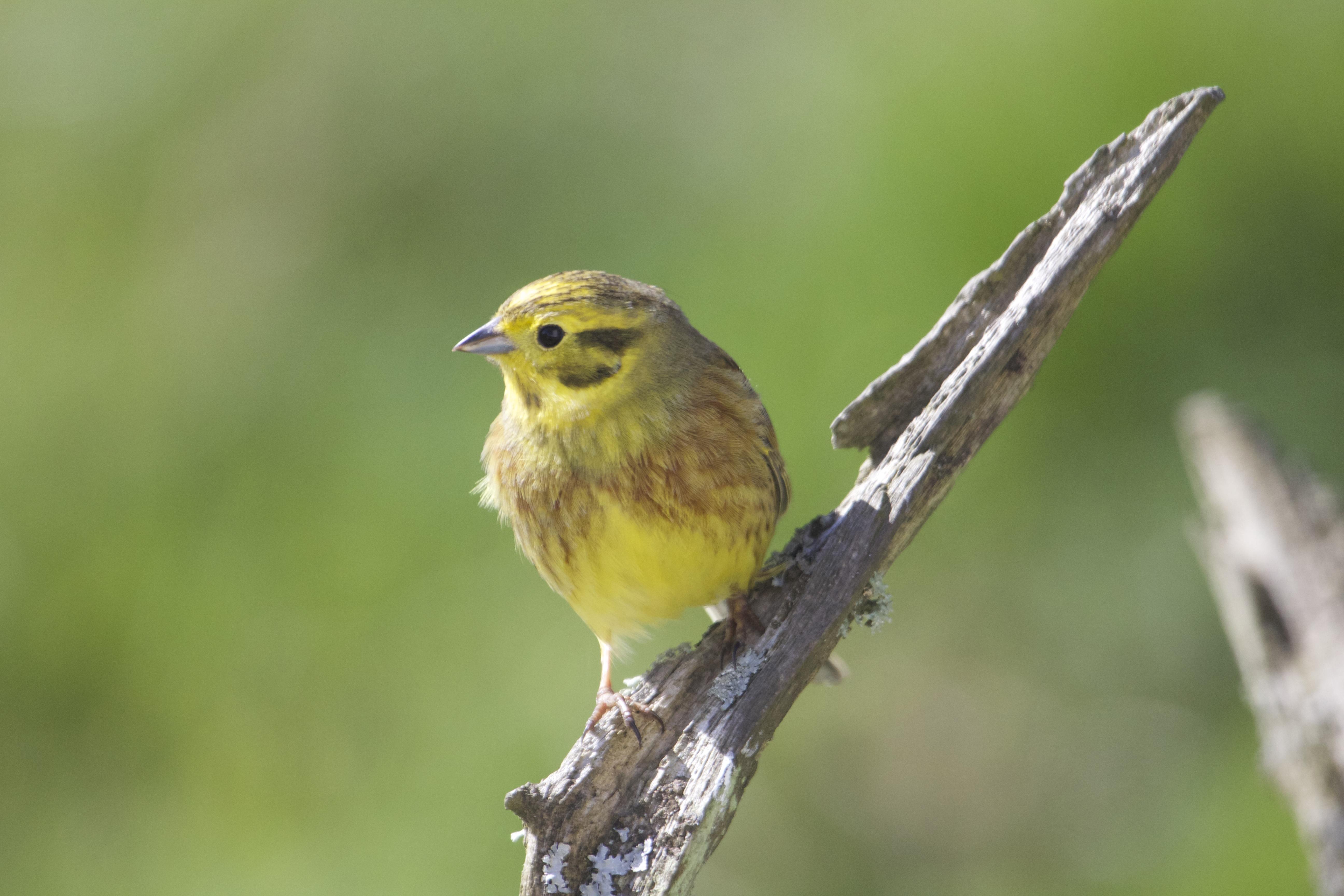‘These sculptures are a melancholy time capsule of songs that act as totems to remind us how fragile our relationship with nature is. The birds’ songs are memorialised as sculptures. By reading the shape of the sculpture we can reconstruct the sound in our mind.’
- Andy Holden
 Yellowhammer
Yellowhammer
Often a flash of bright yellow in a hedgerow is your only view of a Yellowhammer, but males in spring will also perch on exposed branches to proclaim their distinctive song that carries across the countryside. At this time, you may also see the head and breast is yellow, the body rich streaky brown and the rump rich chestnut. Females and young are duller and streakier. In winter it becomes social and flocks together, sometimes joining with other small birds, as they travel around searching for the best feeding places.
Song
From the top of a gorse bush or a prominent hedgerow perch on the edge of a weedy field, the sparrow-sized Yellowhammer tilts back his brightly-coloured head as if singing to the sky. He starts his song verse with a run of six or so evenly paced repeated notes, a simple rattle with a rather metallic quality, and then rounds them off with a slightly lower-pitched longer wheeze.
It has led to the song – and indeed in some places the bird – having become known as ‘little bit of bread and no cheese.’ Some extra-polite males love to throw in a second wheeze at the end ‘a little bit of bread and no cheeeeese, pleeeease!’
Listen to the birdsong
Conservation
This bird is a familiar sight and sound across most agricultural areas of lowland Europe. In the Netherlands many species that breed in farmland are in trouble, with the total population estimated to have halved since the 1990s. While many species are in decline, the geelgors (Yellowhammer) appears to be holding its own. This should be welcomed because in some neighbouring countries such as Great Britain this bird is a red data species with a significant decline reported, affected by agricultural changes such as removal of hedges, ploughing of field margins and reduced insects and seeds due to insecticides and herbicides.

Background to the sculptures
Andy Holden (Bedford 1982) has a special interest in birds and often works with his father, Peter. Peter Holden (London, 1948) used to work for the Royal Society for the Protection of Birds and set up the annual garden bird watch in the U.K.
For the Auguries, Andy Holden identified a number of birds native to the British Isles that are in decline: the Yellowhammer, the Swift and the Mistle Thrush. The sculptures are three-dimensional representations of oscillograms, wave forms generated by recording the unique song of each bird. Wave forms of sound recordings are normally viewed horizontally; however, the sculptures are displayed vertically, pointing up towards the sky.
Each sculpture is cast in bronze, recalling the public sculptures of Henry Moore (Castleford 1898 – Much Hadham 1986) and Barbara Hepworth (Wakefield 1903 – St. Ives 1975), who would sometimes take natural elements such as stones or flint as the starting point for their public works. The sound of each bird becomes a solid form and given the long life of bronze the sculptures could outlive the species they represent, becoming memorials to sounds that are no longer audible to future generations.
The species represented here were inspired by references in Charles Waterton’s (Walton Hall, 1782 – West Yorkshire, 1865) notebooks, and because they are species in rapid decline throughout the U.K. and in parts of Europe. The Swift, for example, has declined by over 57% in the last 25 years in parts of the U.K, and the Yellowhammer’s numbers have halved in the U.K in the past forty years. In the Netherlands many species that breed in farmland are in trouble: “Since the 1990s… the number of farmland birds has halved” (The State of the Netherland’s Birds 2022, Sovon).
The artwork is called Auguries because the ancient Romans used birds to predict the future. Augur means to portend to a good or bad outcome, or to foretell.
Throughout history observing birds has taught us about the world around us and helped us make predictions for the future. In 1962 American author Rachel Carson (Springdale, 1907 – Silver Spring, 1964) wrote Silent Spring, a book that began with her observations about the decline in bird song and lead her to identify the destructive effect the widespread use of pesticides was having on the countryside and the food chain. Her book sparked the environmental movement across the world.


